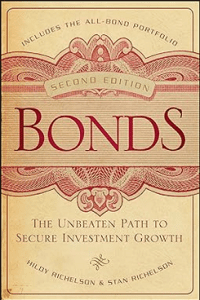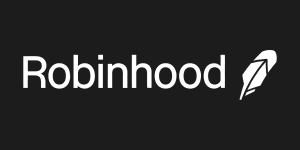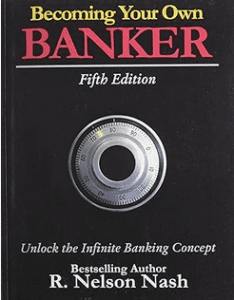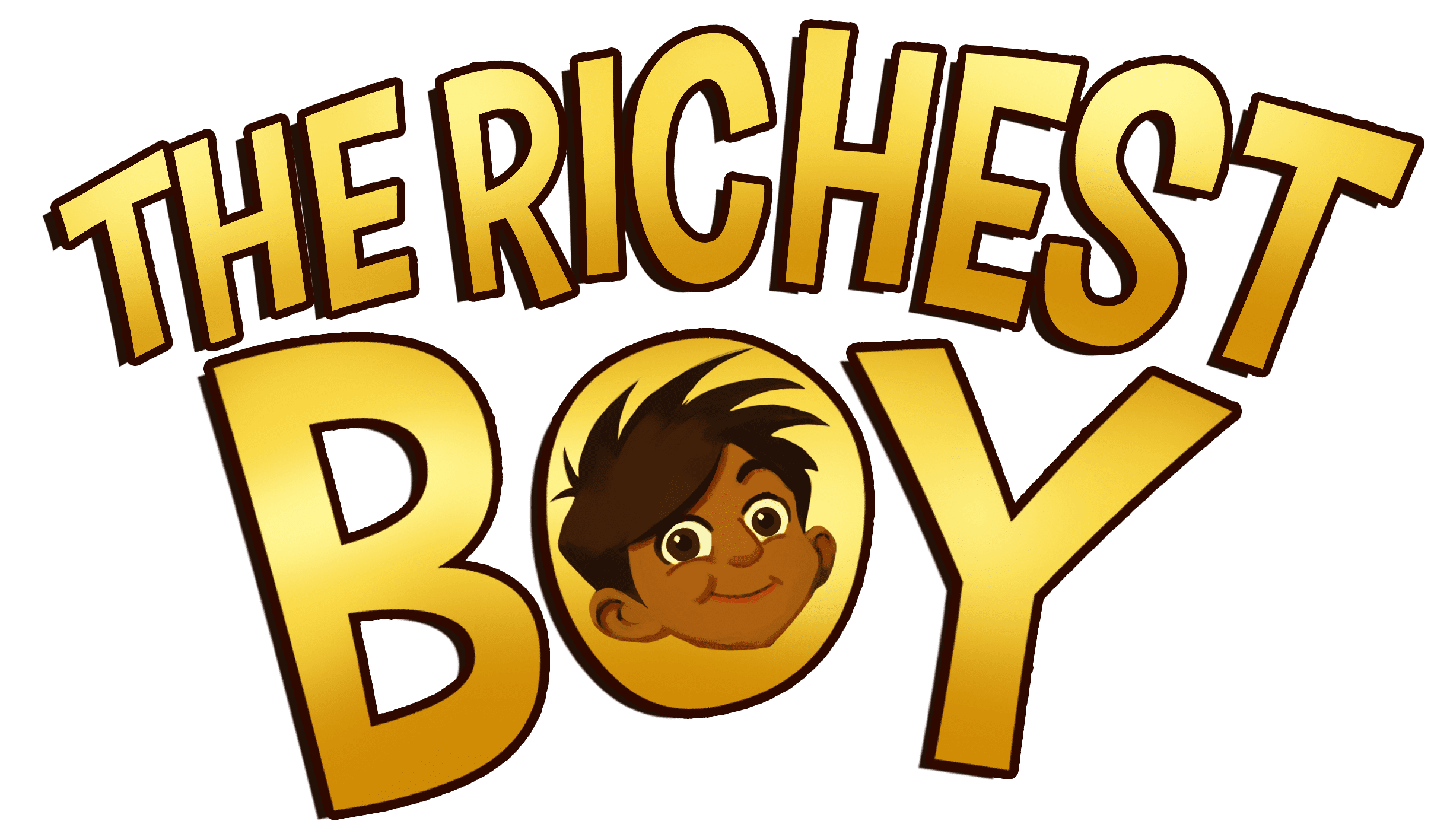 One of the basic ideas we hope to teach through the Richest Boy series is the importance of ‘paying yourself first,’ before paying anyone else—maybe the most important lesson when it comes to one’s personal finances. Paying oneself first, i.e.saving, as we use it here, is the systematic accrual, and preservation, of capital over a period of time, and the outward proof of a low time-preference (a necessary psychological way of thinking and valuing the long term over the short term). Without this, one puts themselves in a precarious situation and is neither ready for the unexpected, nor ready for opportunities to invest and increase one’s wealth and freedom in the future.
One of the basic ideas we hope to teach through the Richest Boy series is the importance of ‘paying yourself first,’ before paying anyone else—maybe the most important lesson when it comes to one’s personal finances. Paying oneself first, i.e.saving, as we use it here, is the systematic accrual, and preservation, of capital over a period of time, and the outward proof of a low time-preference (a necessary psychological way of thinking and valuing the long term over the short term). Without this, one puts themselves in a precarious situation and is neither ready for the unexpected, nor ready for opportunities to invest and increase one’s wealth and freedom in the future.
The next obvious question, if you or your child had begun to pay themselves first, is “where should I be putting this savings?” That is the question we will begin to address here in depth. We will look at the various options, point out the pros and cons of each, and see which savings or investing vehicles make the most sense as a place to store capital and save for the future.
Cash – Many people had a piggy bank when they were a child, especially back in the day when coins still held some purchasing power. This sort of saving “vehicle”—not sure a piggy bank or a hole in the ground can be defined as a savings “vehicle”, but you get the idea—does give us liquidity, and maybe some basic safety if it is stored out site of thieves (and from a collapse of the banking industry), but it lacks protection against the government and banking industry’s inflation having no rate of return, rather it simply decreases in purchasing power as the printing presses run. There are no tax benefits, no ability to leverage against it, no uninterrupted compounding, and no other real benefits. Thus, saving in cash may be one of the worst options.
Checking/Savings account – I’ve included both checking and savings account here because up until recently—and still with many large banks—neither paid anything that could really be considered interest. Only recently, with interest rates increasing, have meaningful high yield savings account again become a reality. If we look at a checking account or a low interest rate savings account, neither are much better than cash in your piggy bank. If we consider only high yield savings accounts then there is at least some yield received on your savings. The “pros” of a high yield savings are a reasonable rate of return (as of Sept 2023, I currently get 4.35% from American Express Savings, for example), security, low risk, liquidity, and compounding—but only if you never use the $, which is not realistic. The “cons” are that the interest is taxable as income, in practice you do not receive uninterrupted compounding, the interest rate can drop significantly if interest rates drop to where they were for the last decade or so, it generally cannot be leveraged against, and there are no other side benefits.
CD – A certificate of Deposit is going to give you returns similar to a high yield savings account, with all of the same pros, except that it is not liquid. Rather you must give a particular sum to the bank for a specified amount of time, and for that you generally receive a higher interest rate—though when I look around, CD’s are often the same or even lower than my high yield savings. Similarly to a savings account you only have uninterrupted compounding if you never use the money, the interest is taxable, it cannot be leveraged against, and there are no other side benefits. I would generally choose a high yield savings account over a CD, but if you’re interested in learning more you can check out some current yields here.
 Bonds – A bond is a debt instrument used when a government, company, or organization is looking to raise money and they offer an interest rate to entice investors to lend them the capital they need. There are many types of bonds to choose from, but the easiest for our purposes here would be federal government bonds or Muni bonds. Federal government bonds are generally considered low risk since they can use the printing presses to nominally stay out of credit trouble, and Muni or state bonds have varying degrees of risk. Federal bonds are taxable, can have uninterrupted compounding if never cashed, and if interest is reinvested into more bonds, has a reasonable expected rate or return (though currently the same as a high yield savings (you could, in theory, lock in a high rate on a long term government bond now if rates were to drop, so they are not always going to be equal), and they are generally not liquid with some requiring specific hold time requirements before selling. Muni or State bonds are the same except they are generally tax free, though higher risk. If you want to learn more about bonds and the best strategy for investing in them (building out a bond ladder, for example), you can check out this book here. To purchase the bonds themselves, you can buy federal bonds here, and Muni-bonds here. This is not my favorite place to put you or your child’s savings, especially if interest rates retreat back to the low rates of the last 15 years, but it’s better than some of the alternatives.
Bonds – A bond is a debt instrument used when a government, company, or organization is looking to raise money and they offer an interest rate to entice investors to lend them the capital they need. There are many types of bonds to choose from, but the easiest for our purposes here would be federal government bonds or Muni bonds. Federal government bonds are generally considered low risk since they can use the printing presses to nominally stay out of credit trouble, and Muni or state bonds have varying degrees of risk. Federal bonds are taxable, can have uninterrupted compounding if never cashed, and if interest is reinvested into more bonds, has a reasonable expected rate or return (though currently the same as a high yield savings (you could, in theory, lock in a high rate on a long term government bond now if rates were to drop, so they are not always going to be equal), and they are generally not liquid with some requiring specific hold time requirements before selling. Muni or State bonds are the same except they are generally tax free, though higher risk. If you want to learn more about bonds and the best strategy for investing in them (building out a bond ladder, for example), you can check out this book here. To purchase the bonds themselves, you can buy federal bonds here, and Muni-bonds here. This is not my favorite place to put you or your child’s savings, especially if interest rates retreat back to the low rates of the last 15 years, but it’s better than some of the alternatives.
 Brokerage account – mutual funds or individual stocks – Probably the most recommended place for adults to place their own savings, and is also widely recommended to get children going as early as possible by putting their money into the stock market. This is neither saving, nor investing, but rather is speculation, and too expensive to put a child’s—or an adult’s—hard earned capital. Mutual funds owned in a brokerage are fully taxable, have high ongoing fees, are higher risk (though more importantly, have high volatility), DO NOT have uninterrupted compounding, despite what many claim, and are thus not ideal for long term savings or investing. And because many will be confused by this statement, because everyone and their brother has told them to put their money in the stock market to benefit from compound growth and a high rate of return, let me explain why this is a myth in both regards. In order for there to be compound growth, the account MUST always increase, as soon as you break up the growth, you no longer have compounding, and given the fluctuations and volatility in the market, you will not benefit as many promise. People will often claim the average rate of return is say 10% in the stock market, but this is not at all accurate for many reasons. First, you do not actually receive 10% every year, at least the dollars in the account won’t look that way, even if you do actually get an average of 10%. Let me explain. Let’s say you have an account with $100 and it increases in year 1 by 100%. Then in year two it decreases 50%. Year three it goes back up 100%, and year four back down 50%. In this example your average rate of return is 25% (100+100-50-50/4=25), but what is your ACTUAL rate of return in the account? 0%. That $100 becomes $200 after year one, then down to $100, then up to $200, and back down to $100. So you can see how the often cited ‘average rate of return’ is total bunk, and why so many people get to their retirement years and wonder why their stock portfolio isn’t where they were told it would be. But not only this, actual rates of return in the market are more like 2.5-4.5% after fees, taxes and market timing as many studies and analysis have shown. So while it is tempting, and easy, to open a brokerage account, look at Morningstar, or even just throw your child’s, or your own savings into an S&P500 index fund, I think there are better options, though this is better than nothing, and better than cash. Pros are that these are general liquid, and there is a rate of return higher than a checking or normal savings account. It should also be noted that some brokerage accounts, like Robinhood, do offer the ability to use your stock portfolio as collateral. The terms and rate vary (as of Nov, 2023 Robinhood is at 8-12%, Fidelity 13.5%, Charles Schwab 13.5%, and TD Ameritrade 14.75%), so quite high, and the underlying stocks are volatile and thus can be very risky, especially compared to say a whole life policy loan—discussed later). If you wish to sign up for a no-fee brokerage, I recommend either M1 finance or Robinhood (using this link gets you a free stock if you sign up).
Brokerage account – mutual funds or individual stocks – Probably the most recommended place for adults to place their own savings, and is also widely recommended to get children going as early as possible by putting their money into the stock market. This is neither saving, nor investing, but rather is speculation, and too expensive to put a child’s—or an adult’s—hard earned capital. Mutual funds owned in a brokerage are fully taxable, have high ongoing fees, are higher risk (though more importantly, have high volatility), DO NOT have uninterrupted compounding, despite what many claim, and are thus not ideal for long term savings or investing. And because many will be confused by this statement, because everyone and their brother has told them to put their money in the stock market to benefit from compound growth and a high rate of return, let me explain why this is a myth in both regards. In order for there to be compound growth, the account MUST always increase, as soon as you break up the growth, you no longer have compounding, and given the fluctuations and volatility in the market, you will not benefit as many promise. People will often claim the average rate of return is say 10% in the stock market, but this is not at all accurate for many reasons. First, you do not actually receive 10% every year, at least the dollars in the account won’t look that way, even if you do actually get an average of 10%. Let me explain. Let’s say you have an account with $100 and it increases in year 1 by 100%. Then in year two it decreases 50%. Year three it goes back up 100%, and year four back down 50%. In this example your average rate of return is 25% (100+100-50-50/4=25), but what is your ACTUAL rate of return in the account? 0%. That $100 becomes $200 after year one, then down to $100, then up to $200, and back down to $100. So you can see how the often cited ‘average rate of return’ is total bunk, and why so many people get to their retirement years and wonder why their stock portfolio isn’t where they were told it would be. But not only this, actual rates of return in the market are more like 2.5-4.5% after fees, taxes and market timing as many studies and analysis have shown. So while it is tempting, and easy, to open a brokerage account, look at Morningstar, or even just throw your child’s, or your own savings into an S&P500 index fund, I think there are better options, though this is better than nothing, and better than cash. Pros are that these are general liquid, and there is a rate of return higher than a checking or normal savings account. It should also be noted that some brokerage accounts, like Robinhood, do offer the ability to use your stock portfolio as collateral. The terms and rate vary (as of Nov, 2023 Robinhood is at 8-12%, Fidelity 13.5%, Charles Schwab 13.5%, and TD Ameritrade 14.75%), so quite high, and the underlying stocks are volatile and thus can be very risky, especially compared to say a whole life policy loan—discussed later). If you wish to sign up for a no-fee brokerage, I recommend either M1 finance or Robinhood (using this link gets you a free stock if you sign up).
Retirement account – Roth IRA, IRA etc. – Everything said above regarding the brokerage account and mutual funds applies here except that these accounts are NOT liquid, and usually if you do try to access the cash you are hit with a 10% penalty, though there are a few exceptions to the rule. They do not have compound growth, cannot be leveraged against, have high fees, and a low rate of return after fees, volatility (and taxes, depending on the type of account and assets held). The best of these accounts is the Roth IRA which is after tax contributions but has tax free growth and distribution. This is particularly great for a child who is not paying taxes on contributions and then also has the tax-free growth and distribution. So, if you are going to use one of these types of accounts for your child, a Roth is the way to go. Just remember the money is trapped in the account and generally not accessible to them over the course of their life. An IRA or 401k is less relevant as a vehicle for a minor since they have no taxable income to offset on the front end, so they would not receive the only benefit that exists for a 401k or IRA, that being the tax write off on the front end. In the end a 401k or IRA, assuming taxes rates and one’s income stay the same, are a wash, and you end up paying the same amount of tax that you otherwise would have. To open a Roth IRA you can do so with Robinhood here (if you use this link you’ll get a free stock) or M1 Finance.
 IBC policy – This is probably the one most people are least familiar with, but I would strongly argue is by far the best option. The Infinite Banking Concept (IBC) was first articulated—though not the first to be used in this way, as it goes back 100+ years—by Nelson Nash in his famous book ‘Becoming Your Own Banker’. Many others have written on the subject and updated the idea over the last twenty years such as this, this, and these. To simplify the idea as much as possible, one would use a PROPERLY –and this is VITAL—designed high cash value whole life policy from a top rated and longstanding mutual company (there are only a handful that do this well). As you pay the mandatory and optional premiums into the policy for the death benefit, the policy accrues a cash value, that is essentially the present value of the death benefit, and this cash value grows with uninterrupted compound interest, which can be leveraged against and is almost as liquid as a savings account. These properly designed policies usually see a 3.5-5% internal growth rate of which part is guaranteed and the other part based on the company performance and paid as a dividend to the policy holder, the cash value grows tax free and can be distributed tax free if done correctly, and they can never decrease in value. There are other living benefits that you gain with a policy, such as Long Term Care coverage, disability coverage, creditor protection (depending on the state), among others. They are great for estate planning, generational wealth transfers, and are a great way to ensure your retirement income is its most efficient if one is heavily invested in the stock market (you would use the cash value to draw income from during market downturns, so your capital has time to rebound, and you aren’t drawing off your stocks while they are at their lowest point). The drawback to this vehicle is that the costs of the policy are paid in the first three years, so it is not ideal for anyone who needs every dime of their premiums liquid up front. The other drawback is that there are many people out there selling similar type products that are not properly designed, or may even be stock market-based, and many people will often learn the hard way, years later, that what they thought they bought was not an IBC designed policy, but something else that doesn’t perform the way it should. I have personally been using IBC designed policies for 15 years, and have policies on my newborn daughter which I will use to teach her the basics of personal finance through childhood, and will have a pool of capital in her policies to fund her higher education, or startup capital for a business; pay for her wedding, or a down payment on a future house etc. Plus, it protects her insurability if she were to have a serious health event. If you would like my assistance in setting up one of these policies for you or your child or would like me to make sure a policy you already have is indeed designed correctly, you can reach out to me here to schedule time to talk or just send me an email. You can also check out ‘The Infinite Wealth Podcast’ and their YouTube channel here.
IBC policy – This is probably the one most people are least familiar with, but I would strongly argue is by far the best option. The Infinite Banking Concept (IBC) was first articulated—though not the first to be used in this way, as it goes back 100+ years—by Nelson Nash in his famous book ‘Becoming Your Own Banker’. Many others have written on the subject and updated the idea over the last twenty years such as this, this, and these. To simplify the idea as much as possible, one would use a PROPERLY –and this is VITAL—designed high cash value whole life policy from a top rated and longstanding mutual company (there are only a handful that do this well). As you pay the mandatory and optional premiums into the policy for the death benefit, the policy accrues a cash value, that is essentially the present value of the death benefit, and this cash value grows with uninterrupted compound interest, which can be leveraged against and is almost as liquid as a savings account. These properly designed policies usually see a 3.5-5% internal growth rate of which part is guaranteed and the other part based on the company performance and paid as a dividend to the policy holder, the cash value grows tax free and can be distributed tax free if done correctly, and they can never decrease in value. There are other living benefits that you gain with a policy, such as Long Term Care coverage, disability coverage, creditor protection (depending on the state), among others. They are great for estate planning, generational wealth transfers, and are a great way to ensure your retirement income is its most efficient if one is heavily invested in the stock market (you would use the cash value to draw income from during market downturns, so your capital has time to rebound, and you aren’t drawing off your stocks while they are at their lowest point). The drawback to this vehicle is that the costs of the policy are paid in the first three years, so it is not ideal for anyone who needs every dime of their premiums liquid up front. The other drawback is that there are many people out there selling similar type products that are not properly designed, or may even be stock market-based, and many people will often learn the hard way, years later, that what they thought they bought was not an IBC designed policy, but something else that doesn’t perform the way it should. I have personally been using IBC designed policies for 15 years, and have policies on my newborn daughter which I will use to teach her the basics of personal finance through childhood, and will have a pool of capital in her policies to fund her higher education, or startup capital for a business; pay for her wedding, or a down payment on a future house etc. Plus, it protects her insurability if she were to have a serious health event. If you would like my assistance in setting up one of these policies for you or your child or would like me to make sure a policy you already have is indeed designed correctly, you can reach out to me here to schedule time to talk or just send me an email. You can also check out ‘The Infinite Wealth Podcast’ and their YouTube channel here.
Doing any one of these is better than doing nothing, but if I had to choose the order from best to worst places for a child’s (or adults) savings is as follows:
- IBC policy
- High yield savings
- Roth IRA (if you do a Roth I would do 50% Roth and 50% high yield savings for liquidity)
- Brokerage account
- Bonds (can be held in a brokerage)
- Checking/savings
- Cash
- IRA or other qualified account
PROs and CONs of each
IBC Policy:
Pros: Uninterrupted compound growth even while you use the cash for purchases, good internal rate of return, liquid, guarantees/low risk, cannot decrease in value, a tax-free death benefit, tax free growth and distribution*, creditor protection, forced savings, early access to death benefit in cases of a LTC event or terminal illness, good for estate planning and wealth transfers between generations.
Cons: Upfront fees, ongoing premium payments required*, often not properly designed for best performance, only a few companies do it well, requires the help of a knowledgeable agent for proper design.
High Yield Savings:
Pros: good rate of return during high interest rate environments, liquid, low risk, can’t decrease in value.
Cons: Taxable, compounding growth is interrupted if cash is used, poor interest rate during low interest rate environment.
Roth IRA:
Pros: Tax free growth and distribution
Cons: Illiquid, cap on contributions, higher risk (depending on account holdings), no compound growth due to market volatility (but can have compounding if invested in bonds), fees and penalties for early access before age 59.5, high ongoing fees (depending on account holdings, for example if mutual funds make up most holdings).
Brokerage Account:
Pros: Liquid, easy to set up and access to many speculative and investment options, can have an ok rate of return (varies enormously), probably better than cash or a low yield savings account.
Cons: Taxable (unless holding Muni’s within it), high volatility, high risk (depending on assets held), can have high fees (if holding mutual funds and ETF’s).
Bonds:
Pros: Depending on general interest rate environment they can have a decent rate of return, safety of capital, can be liquid, can have uninterrupted compounding (requires manual effort here). Within a Bond fund, some of these pros are lost.
Cons: Taxable (unless Munis), requires some manual effort and tracking, within a Bond fund there can be high fees and volatility, and a potential loss of capital.
Checking/Savings:
Pros: Liquid, safety of capital.
Cons: Taxable, 0% or close to 0% rate of return.
Cash:
Pros: Liquid.
Cons: No return, physically at risk of loss.
IRA/401k or other qualified accounts:
Pros: Potential ok rate of return (depending on underlying asset performance), Tax deferred (not important for a child).
Cons: Taxable, depending on underlying assets may not have uninterrupted compounding, early access fees, mandatory withdrawals and other regulations that make them illiquid, high fees if owning mutual funds within account, assuming invested in the stock market has high volatility and high risk.
